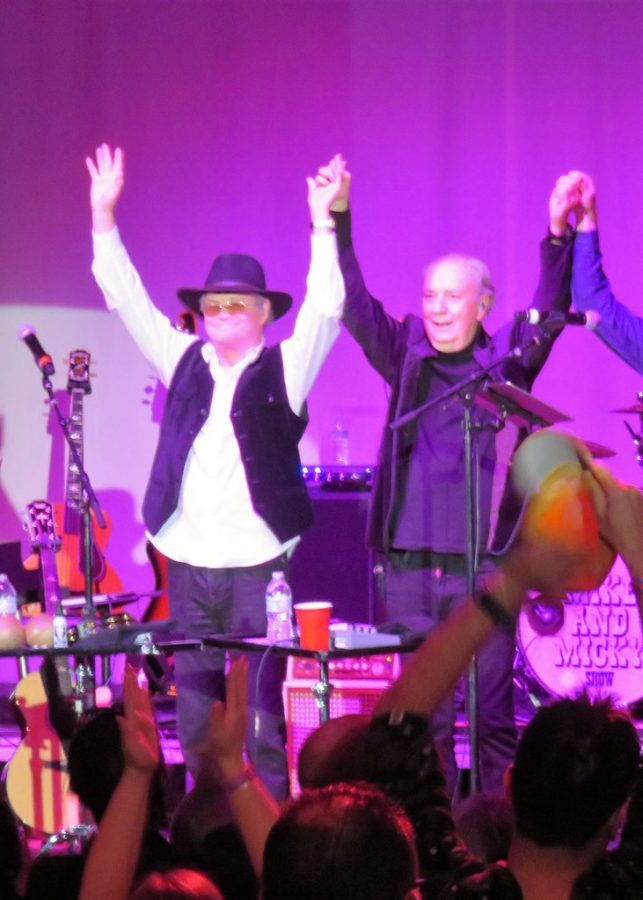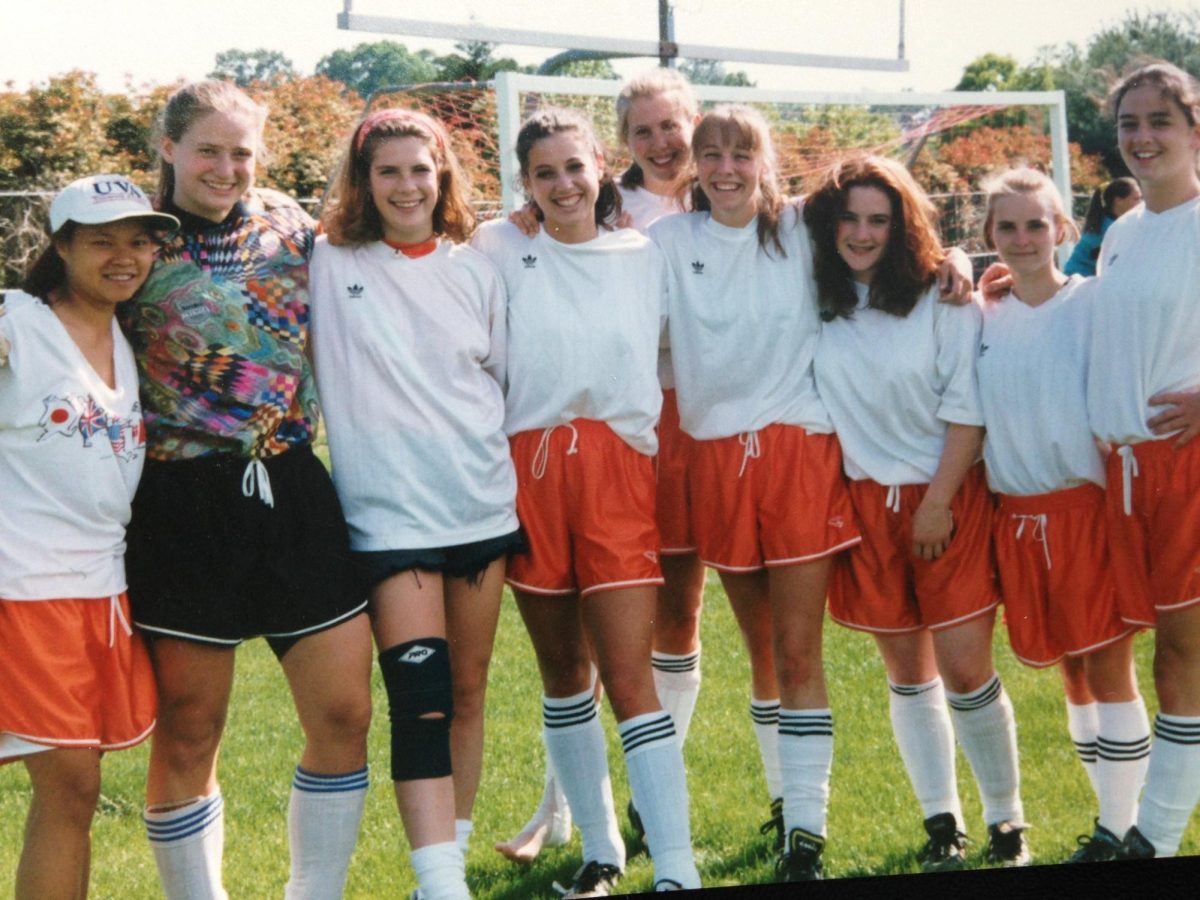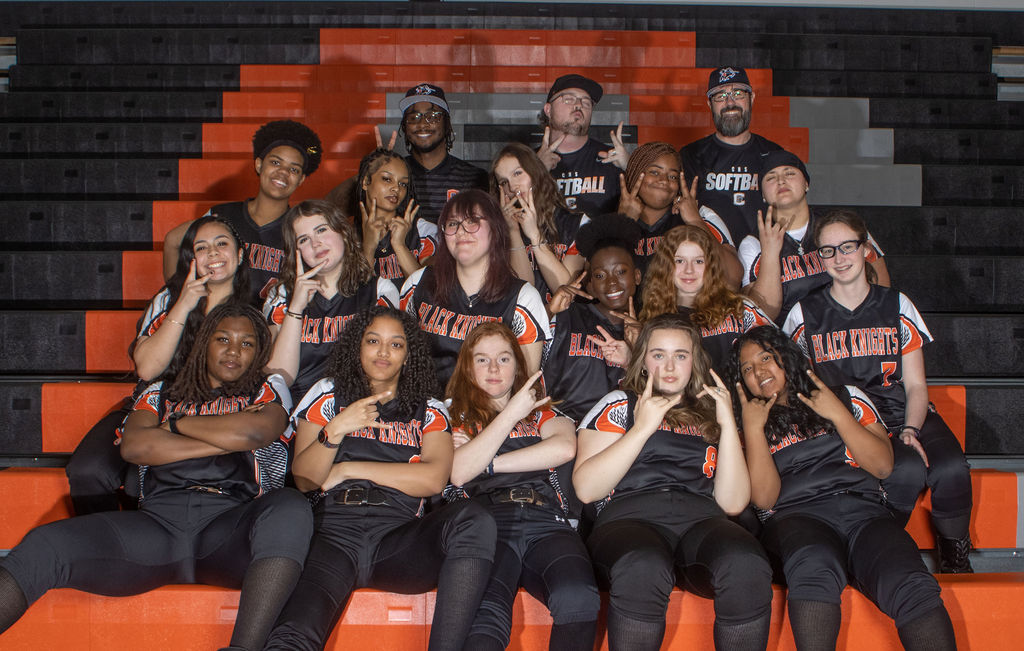The Mike & Micky Show Live (2020 album) Review
Micky Dolenz and Michael Nesmith at one of their shows.
April 6, 2020
For the past year (has it been so long? So short?!) I’ve listened to and enjoyed the albums of the Monkees. Here is their newest live album and possibly their very last album. It might seem pointless to make a new album, seeing as 50% of the band, Davy Jones and Peter Tork, are sadly deceased. It’s also noteworthy as Michael Nesmith was the Monkee least involved with the Monkees. He was often entirely absent from tours. After the quartet played in the mid-90’s, he would not return until 2012, sadly after Davy Jones had passed. He’s progressively played more since then and here, he certainly isn’t absent from the album. He most likely features on all of this album’s songs.
As a guitarist for most of his life, Nesmith probably fills all the lead guitar roles. It sounds so good to hear him and Micky banter. For a few tracks, they’ll talk to the audience briefly before singing a song. Both Nesmith and Micky Dolenz seem to be having the time of their lives playing these tunes. There’s real excitement in their voices. It’s quite wholesome and heartwarming hearing Nez say he’s never enjoyed working with someone more than Micky Dolenz.
There’s no new songs here, it’s all the old favorites that Monkees fans have probably heard several times. There’s no complaints from me there. Most of these songs sound very good. Even the bad ones, like “Mary, Mary” have more spirit and energy here than on their original album counterparts. These songs sound less like pop songs than initially. Maybe that’s because they’re sung live or because they’ve been rehearsed a million times. That more lively and consistent sound gives this album its flavor. Two of my favorites from this album are “The Door Into Summer” and “A Little Bit Me, A Little Bit You”. Those two, as well as many other tracks on this album, play with the ambiance of the scene. The instruments and singing fill the space and make a spectacle. Songs like “Pleasant Valley Sunday” and “Tapioca Tundra” are more poetic lyrically and are sung more on the quiet side than many others. The choice of instruments and how they’re used sounds methodical.
Not all of the songs are improved. A common problem I’ve had with the Monkees’ sound once they’ve gotten older is that the songs seem like they’re written for guys in their twenties. When they’re singing them in their fifties, sixties, seventies they just don’t sound right. A key example is “(Theme From) The Monkees”, which includes the line “We’re the young generation…” Fortunately, that song’s absent. I’ve never liked it much anyway. Songs that are present here, like “[I’m Not Your] Steppin’ Stone”, which is about a gold digger who is perturbing the singer and “Last Train To Clarksville”, which is about a soldier going to war; don’t make much sense with older voices.
Generally, the best songs don’t sound as good as they’re not recreated in the right way. I always loved the timpani in “Randy Scouse Git”, but it’s absent here. “The Girl I Knew Somewhere” originally had Nesmith on backing vocals, but now he’s not. It’s not like he was elsewhere at the time. A lot of the songs are performed slower and/or with certain instruments or scenes missing. Some songs are improved with these changes. “Papa Gene’s Blues” is a song that is popular with fans, but I never really liked. Here, Micky and Mike talk briefly, then it’s performed with a more raw sound than previously. There’s fewer instruments and a more simplistic composition. Micky participates with backing vocals which make the song sound much better. Multiple vocalists often improve the sound by adding a bit of weight to the piece. Many tracks feature female backup singers. They were very good. I was surprised by how much they complimented the songs. The more relaxed and stripped back style works with songs like “Sunny Girlfriend” and “Goin’ Down” as well. Because of pronunciations of words and instrument choices, songs like “Goin’ Down” and “For Pete’s Sake” made more sense to me.
The final four tracks could be called this album’s finale. At least to me, they have a grand feeling to them. “[I’m Not Your] Steppin’ Stone” was the last track on side A of More of the Monkees. Here, it’s the first of the last four. It emphasizes this album’s playful style by knowing it’s a bit silly, but the more wild and loud sound bring it to life. There is a bit of power in the performance of the instrumentalists. Next up is the band’s second most famous song, “Daydream Believer”. Daydream’s singer, Davy Jones, passing was quite hard on the many fans of the Monkees. This album’s version was quite sweet and humble. Micky sings most of the song, then says “It’s your turn…” to the audience. The audience sings the chorus and Micky jumps back in and ties it all off. This version of the song seems like an attempt to bring back Davy’s spirit and influence. The things people love about him simmer and ring. He was the one with the smile. He was the frontman. He was the image of the group. On an album by the Clash, one song called “We Are the Clash” was partially sung by a crowd that shouted “We Are the Clash!” That band’s frontman, Joe Strummer, said the message of the song was to say that the fans were the Clash. I interpret this version of “Daydream Believer” similarly. The fans are important to the product. We come together to go to concerts, listen to albums, and fill the hole that formed when Davy died. This song is like a finale to Davy. It encompasses many of his best qualities, his humility and heart.
It was a bummer to me that the best Monkees albums, The Monkees Present, was only represented by one song, but it’s one of my favorite Monkees songs and it’s the most liked song on Present. “Listen To The Band” rocks. It continues the spirit of Steppin’ Stone with its loud, orchestral style and energized lyrics and singing. Even on the original studio album, it appeared as though the song was trying to imitate a live sound. It works perfectly well as the real thing. The song is mainly about getting people lively. I always love the part when Nesmith yells “Listen to the Band!” and the instruments start roaring. This one is Nez’ finale. It has all the things that work about his songs. There’s a story and performance to them. Now it’s time for Micky’s finale. This song is the band’s most famous and it ends the album very well. It’s kind of strange that “I’m A Believer” works as well as it does. It’s just a love song on paper, but it plays like a little ballad in how it’s performed. This one gets the crowd going and it leaves you on a good feeling. This is the same on its original album, More of the Monkees. This was the last song on that album too. Some of Micky’s wordless vocals in the piece help emphasize the love he has for the girl in the song. The instruments flesh out the environment and tone of the piece. The song ends in finality for the album and possibly the Monkees’ discography as a whole. Who knows?
The Monkees have nothing left to prove. They’ve compiled a lot of their hits together and made a great show with them. None of these songs sound bad and some are pretty good. What’s next for the band? I can’t be sure, but it’ll surely be fun to sit back and see.





